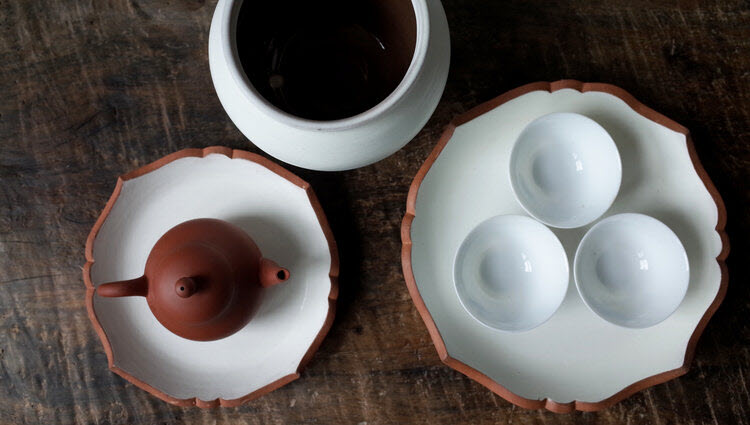Mary Cotterman was 12 when she learned to throw clay on a potter’s wheel. In the decades since, that wheel has never stopped spinning for this accomplished teaware artisan. She describes the foundation of her work as functionality, “because for me, no matter how it looks, if I’m making a piece of teaware it needs to be a precise tool for pouring tea, so a lot of my design I take from traditional Chinese vessels, but I have learned small techniques and vernacular from all over.”
- Caption: Mary Cotterman turning a teapot lid at her studio in Asheville, North Carolina
Hear the interview

Teaware Born from Native Mud
In 2015 Cotterman moved to China to learn from the old masters how to pour Chaozhou Gongfu at the Ming de Yuan production studio and to speak Mandarin. She spent two years there learning Cha Yi (tea arts) from a master in the Beijing school, becoming the first westerner to throw shou la hu teapots. She next studied at the San Bao International Ceramics Village in Jingdezhen, the home of porcelain for 1700 years. Her residency included helping run a gallery, curating shows, and translating for international artists.
In 2018 she returned to the United States after a long sojourn across Europe. She makes her home in Asheville, North Carolina where you will find her crafting water jars, pitchers, teacups, celadon gaiwans, and ash-glazed Japanese-style Kyusu teapots in a wood-fired kiln. By day she forages for local plants, studies traditional folkways and earth-based practices.
Dan Bolton: Your arrival in Asheville anchors the western end of a bridge that spans Europe and leads to ancient China where you spent several years learning Gongfu Cha style pottery and to speak the native language of porcelain and Yixing clay. Will you describe for listeners the state of artisan teaware in the US?
Mary Cotterman: Teaware in the US is a reflection of the amalgamation of different traditions from throughout the world, wherever tea goes, it creates its own unique culture based on how the people in the region live. In the US we’ve got the British teaware, a lot of us ceramicist make teaware and teapots in that style.
I don’t. I specialize in small Chinese teapots.

As the tea community gets more educated and broadens, people are getting excited about teaware from different places. So, Gong Fu Cha, the Chinese tea service is becoming quite popular in the United States and throughout the world.
To me, it’s a really lovely experience pouring tea in this way because it lends an aspect of ritual to people’s lives that I think we miss a lot in our quotidian daily lives because we’re rushing to and fro.
The Chinese tea service invokes this sense of process and ritual.
I also make Japanese-style Kyusu pots, which are side-handled teapots with big openings. They’re typically used for green tea so a lot of steam needs to be able to escape the opening. You don’t want your pot getting too hot.
As people get familiarized with the different styles of tea and regions, they’re starting to collect teaware from all over.
Dan: On your website you mention that every vessel contains the wisdom you absorbed from around the world. How do you see the wisdom manifest in your work?
Mary: That is a good question. The foundation is functionality, because for me, no matter how it looks, if I’m making a piece of teaware it needs to be a precise tool for pouring tea, so a lot of my design I take from traditional Chinese vessels, but I have learned small techniques and vernacular styles from all over.
I’ve been doing wood firing recently, which is a really magical process, very labor-intensive. That style of wood ash glaze was taken to its height in Japan. It’s done all over the world. But the particular long firings in very hot kilns for the buildup of wood ash to create this really natural glaze is a long-standing Japanese tradition.
I think of lineage a lot as a craftsperson. There’s a gift that you’re given by your teachers especially with pottery. It’s difficult, and it’s a steep learning curve, and you can practice for many, many, many years and still not be an expert.
I think of lineage a lot as a craftsperson. There’s a gift that you’re given by your teachers especially with pottery. It’s difficult, and it’s a steep learning curve, and you can practice for many, many, many years and still not be an expert.
– Mary Cotterman

Dan: Will you describe the artisan spirit and state of mind of those embracing native clay to make teapots and teaware in the US and elsewhere?
Mary: This is an interesting area of exploration because it is at once new in that we’re trying to be more ecologically friendly and our artists and practices, we’re trying to be climate-conscious in our practices so that we can continue making pottery, as humanity always has, but it is also something that is historical.
Throughout the world’s pottery, artisans gather around natural sources of clay. And each source of clay has its own life story. Yixing clay is very touted and it’s incredible, and it’s very good for what it is, but it is not special in its uniqueness. Every native clay has unique properties based on its life story, the mineral composition, and what bacteria is in the soil will affect how it can be worked.
Native clay is integral to pottery itself. Finding that relationship between the Earth and us between the life story of the clay began on the top of the mountain, rocks eroded over millions of years added plant material and bacteria, and then it gets deposited in a place where you can go and dig it.
There are many ways you can use this in the process; you can make things out of native clay, and you can also use them as slips or decorating or crush up rocks to use in glazes. It’s really all about coming back to the origins while also looking forward to a sustainable practice.
Dan: Asheville is a thriving community of artists. How has covid impacted the arts community there in general and you as a tea artisan.
Mary: The shift to lockdown personally wasn’t huge because I’m already kind of a hermit. It’s mostly just me in the clay all day, which continued throughout COVID.
Our studio, which is a big warehouse, subdivided into different studios, was shut down formonths, Not being able to get my hands on play was pretty tough. It’s a deep source of grounding and a spiritual connection did for me So that part was hard.
Once our studio opened back up, in the summer of 2020, it was pretty normal. My sales, thankfully, were doing pretty well.
I think people getting stimulus checks in the US were putting those to good use.
I haven’t met most of you, but you’re all online all over the world, and really just showed up for the small businesses in the tea community in a really inspiring way.
As far as the tea places everyone shifted, I think everyone sort of had to suddenly become more online and do different things like subscription services, and, you know, selling more loose tea. I know, for some of those sit-down businesses, it was quite rough, but I think everybody made it to the downhill side intact from the tea businesses that I know.
As a creative person, it was really nice to have the social pressure taken off, because I have some social anxiety, and so being social definitely takes a lot of energy for me.
During COVID, I went into a monk-like creative state because all I was doing was staying at home with my dog and my sweetheart and then sort of meditating for hours on end in the studio, silent and almost nobody else in there.
It was a really lovely time where the whole world slowed down like I feel when I’m working late at night in the studio, and I could just tune in and listen deeply to the craft.
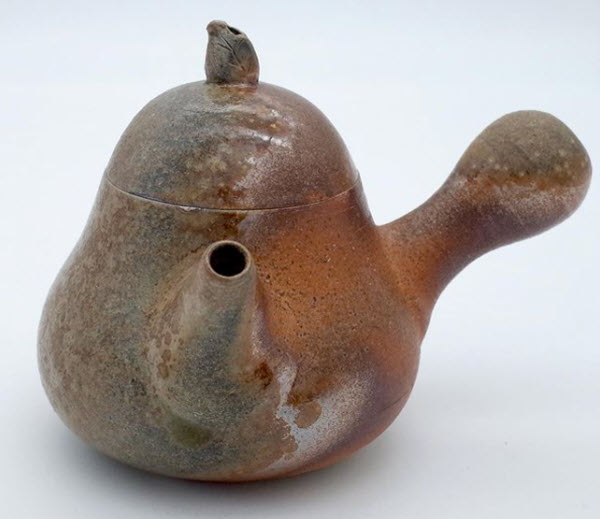
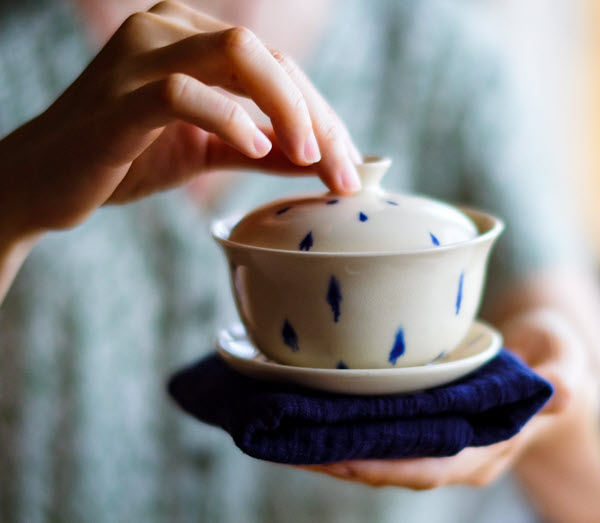
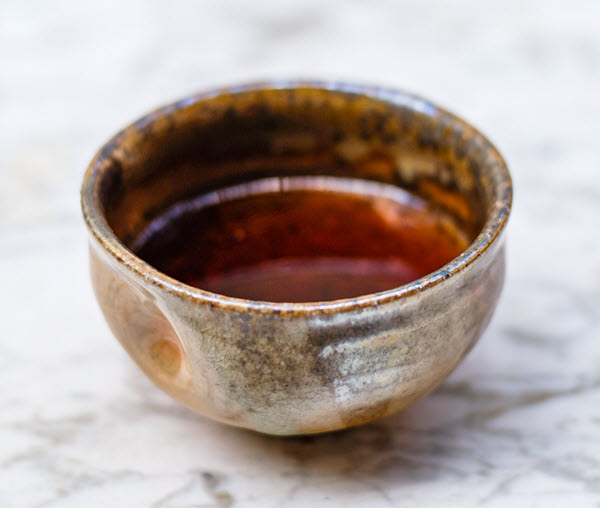
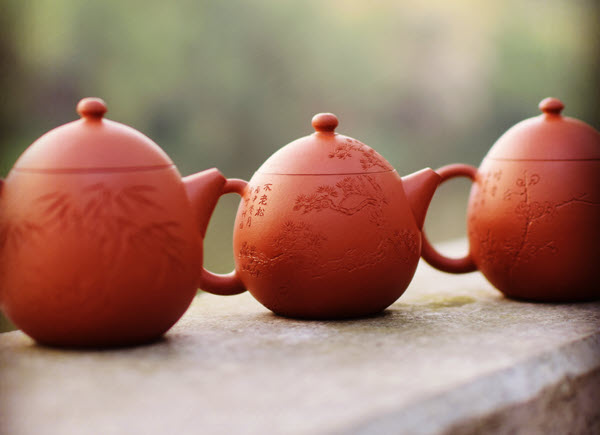
Link to share this post with your colleagues
Signup and receive Tea Biz weekly in your inbox.
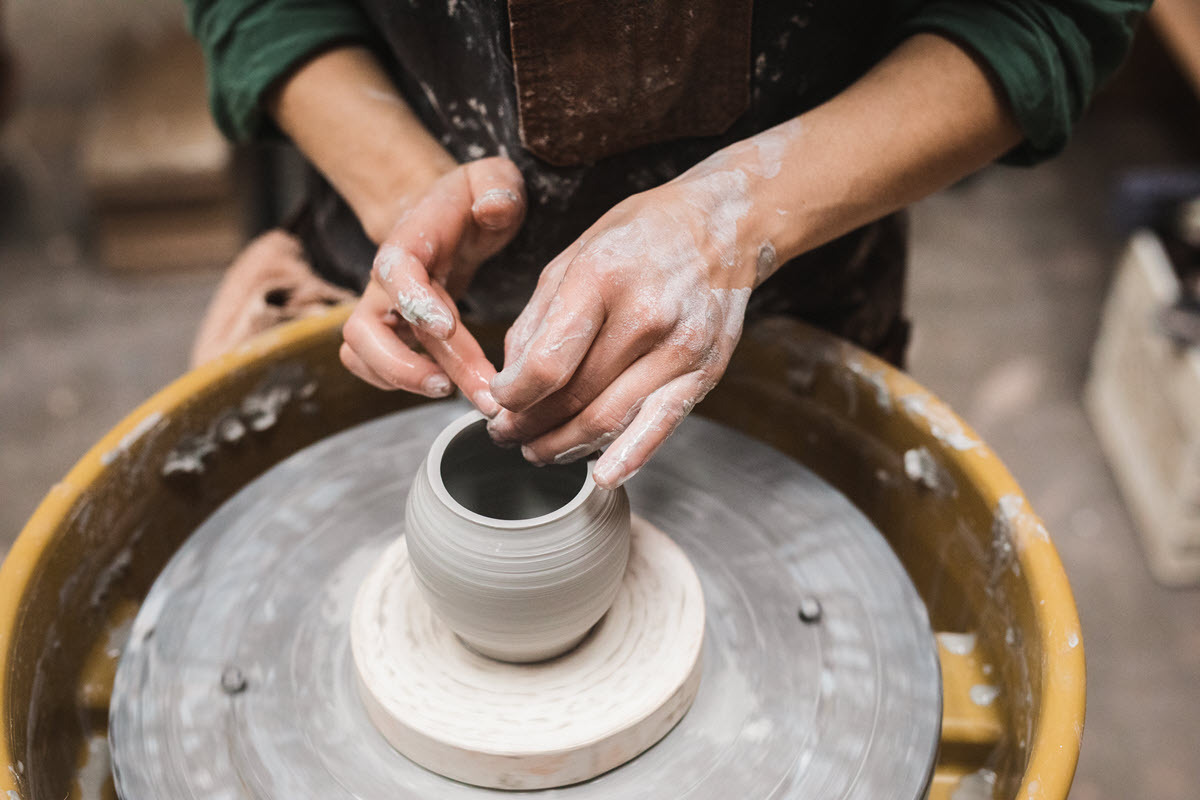
Never miss an episode
Subscribe wherever you enjoy podcasts:

